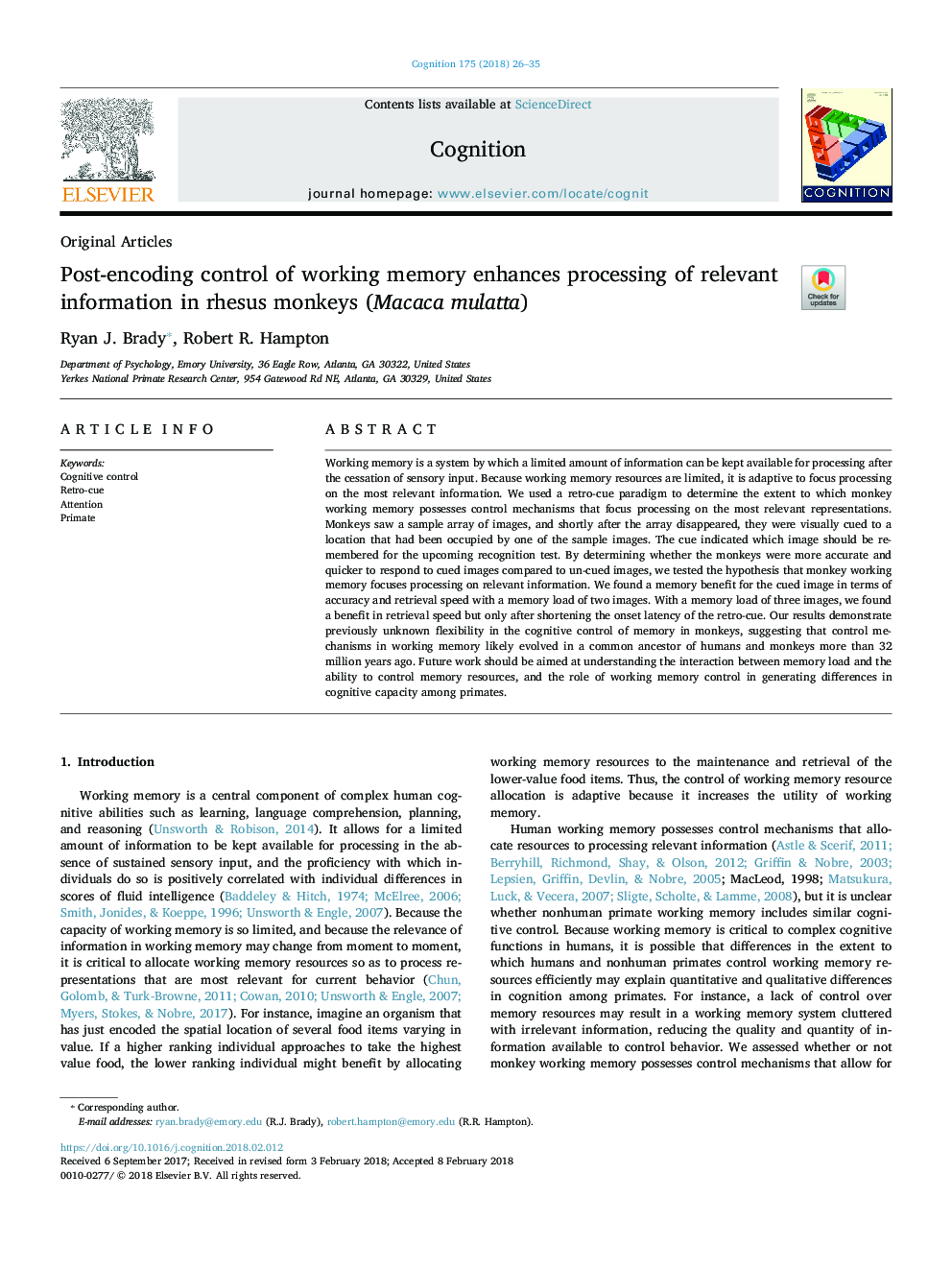| Article ID | Journal | Published Year | Pages | File Type |
|---|---|---|---|---|
| 7285325 | Cognition | 2018 | 10 Pages |
Abstract
Working memory is a system by which a limited amount of information can be kept available for processing after the cessation of sensory input. Because working memory resources are limited, it is adaptive to focus processing on the most relevant information. We used a retro-cue paradigm to determine the extent to which monkey working memory possesses control mechanisms that focus processing on the most relevant representations. Monkeys saw a sample array of images, and shortly after the array disappeared, they were visually cued to a location that had been occupied by one of the sample images. The cue indicated which image should be remembered for the upcoming recognition test. By determining whether the monkeys were more accurate and quicker to respond to cued images compared to un-cued images, we tested the hypothesis that monkey working memory focuses processing on relevant information. We found a memory benefit for the cued image in terms of accuracy and retrieval speed with a memory load of two images. With a memory load of three images, we found a benefit in retrieval speed but only after shortening the onset latency of the retro-cue. Our results demonstrate previously unknown flexibility in the cognitive control of memory in monkeys, suggesting that control mechanisms in working memory likely evolved in a common ancestor of humans and monkeys more than 32 million years ago. Future work should be aimed at understanding the interaction between memory load and the ability to control memory resources, and the role of working memory control in generating differences in cognitive capacity among primates.
Related Topics
Life Sciences
Neuroscience
Cognitive Neuroscience
Authors
Ryan J. Brady, Robert R. Hampton,
